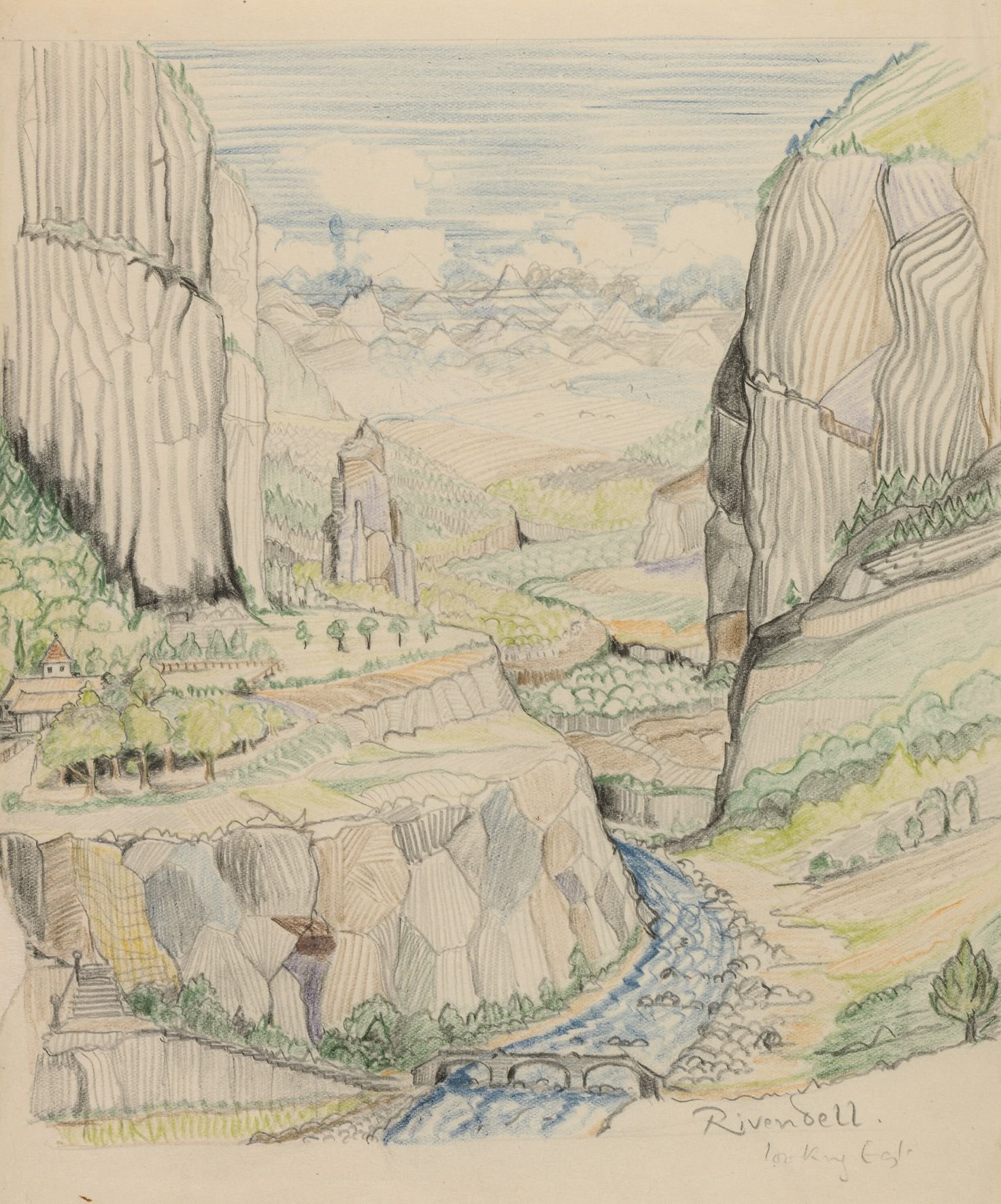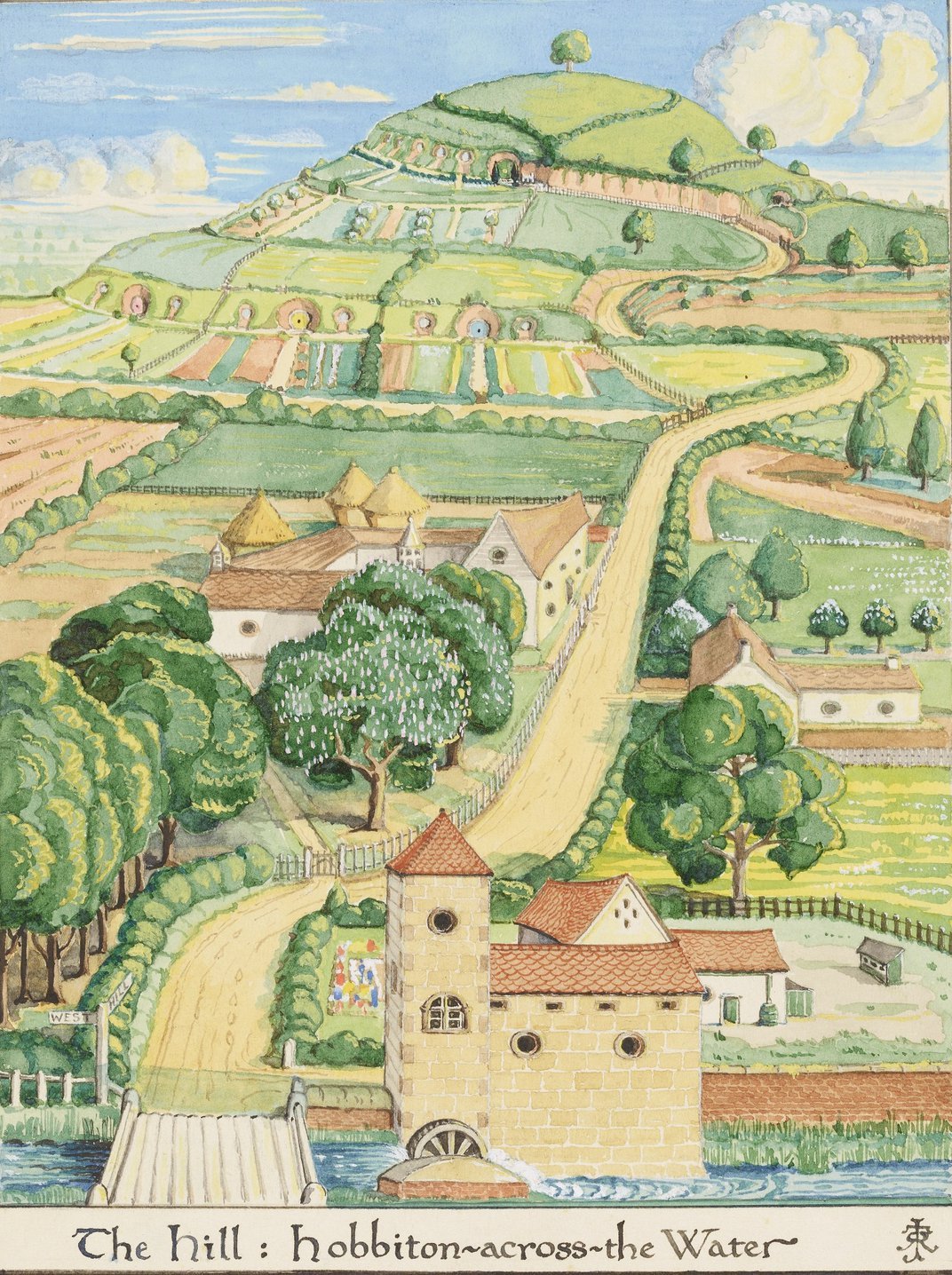To create his fictional world of Middle-Earth, English author J.R.R. Tolkien used nearly every creative tool at man’s disposal, be it calligraphy, cartography, prose, poetry, or painting.
To grease the gears of his mind so as to churn out the endless layering and details typical of the novels and appendixes, Tolkien often turned to ink and graphite, and many of his sketches and paintings are available to view on the recently-updated section on the Tolkien Estate website.
Enduring audience members can also enjoy images and paintings done outside of his work on Middle-Earth, as well as audio clips and other documents related to his personal life and efforts as a mapmaker, calligrapher, and artist.
Debuting on February 26th, the date at the beginning of the second book of The Lord of the Rings at which the Fellowship of the Ring was broken after the death of Boromir, the new website also includes paintings done for his four children, for whom the stories which became The Hobbit and Lord of the Rings were first made.
Further illustrations were included from his work on The Silmarillion, which very much like the book, take on a much-deeper element of myth, with wild colors blending with scenery that melds into an image in the background as if from a half-remembered dream.
The new audio section is also particularly striking. “Tolkien was first introduced to a tape-recorder by his friend George Sayer in 1952,” the estate details. “He was so impressed with the sound quality that he sat down and read out passages from his manuscript of The Lord of the Rings”.

The man who became a god
Not only because he created an entire universe (albeit with extensive help from other mythologies) but because he created perhaps the most beloved and revered such universe in literary history.
Tolkien became a man in perhaps the worst single moment in history to do so, around 1914, at the dawning of World War I.
“In those days chaps joined up, or were scorned publicly,” he wrote in a letter to his son Christopher later in life. “It was a nasty cleft to be in for a young man with too much imagination and little physical courage”.
He was a junior officer at the Battle of the Somme, one of the bloodiest of the war. Catching trench fever, he was shipped back to England just days before nearly every young man in his battalion was killed during an attack. Talk about a Hobbit’s luck.
He wrote The Hobbit in the 1930s, after which it became so tremendously popular that public urging convinced him to write more about the quaint little people who live under the hills.
“In spite of the darkness of the next five years [World War II] I found that the story could not now wholly be abandoned and I plodded on, mostly by night,” he recalled in a foreword to the Fellowship of the Ring, wherein he also details how more and more as he continued advancing the story, he felt more and more strongly that he needed to retro-march, towards what he called “the Elder Days,” referring to the tales which would become The Silmarillion.
Tolkien created parts of the Middle-Earth universe in different batches in different parts of his life, often jumping around. Paintings, maps, and calligraphy from the languages he invented were sometimes made years before or after his novel’s publication, and other times they were done alongside the words which the book contains to describe what he was illustrating.
The maps are also typical of the man. Growing outward from theaters of action in the books, sometimes to such richness as they had to be joined to other sheets of cartography paper with brown packing tape. WaL
PICTURED ABOVE: A black and white version of this illustration appeared in the original Hobbit; not long after, J.R.R. Tolkien revised the picture and published a color version in the first American edition of the book. The Hill: Hobbiton-across-the-Water, August 1937. PC: © The Tolkien Estate Limited. Fair Use.
If you think the stories you’ve just read were worth a few dollars, consider donating here to our modest $500-a-year administration costs.




Correction: The new online Tolkien collection does not contain "all" of his maps and paintings. Rather, it is a representative collection. I’d estimate somewhere around half of what has been published (in various sources) previously.